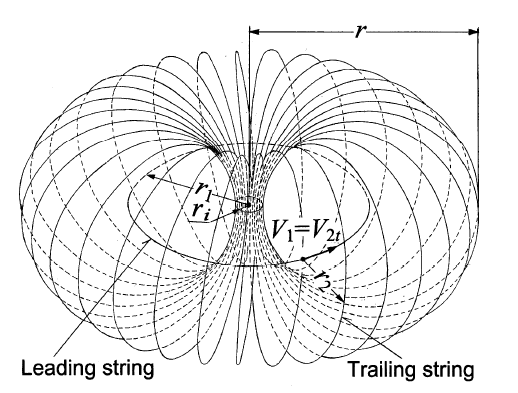New Theory or Model
There are numerous scientists who have worked decades on their models creating very detailed calculations, models, and drawings that are quite impressive. For the average non-math, non-technical person, it is often a lot to take in. Our advice with works like Dr. Ginzburg’s, to at least take a look and get a “feel” for his model and work.
Ginzburg is the author of several books on his work which has evolved over the decades. Below, is a technical paper he wrote for describing this 3D-SST model which anyone can read in the natural philosophy wikipedia and database. Below are some of the highlights including a video that explains the theory in a few minutes.
Link to the paper: Basic Concept of 3D-SST
Technical Paper Abstract
According to the 3-Dimensional Spiral String Theory (3D-SST), at the core of the universe are two polarized spacetime spiral string entities called toryces and helyces that form elementary mass and radiation particles respectively. Polarization of toryces is a result of a topological inversion of their spacetimes that enables them to absorb and release energy. Elementary mass particles are created from toryces by following the universal conservation laws. Helyces are created when their parental toryces are transferred from higher to lower quantum energy states. Depending on the type of their parental toryces, the helyces form elementary radiation particles having various frequencies and propagating at either luminal or superluminal velocities. The radiation particles are responsible for exchange of energy and communication between the matter particles. Physical properties of toryces and helyces are directly related to their spacetime properties. The theory requires a new interpretation of zero, number line and trigonometry.

Conclusions from Ginzburg’s 3D-SST Mode
- All elementary particles are made up of polarized spacetime
spiral string entities called toryces. - Toryces are polarized in two ways, by their vorticity (with positive and negative charge) and by their reality (real and imaginary). The polarization involves topological inversion of their spacetimes.
- Toryces exist at two types of quantum energy states called excitation and oscillation.
- Toryces form elementary matter particles called electrons, positrons, aetherons and singletrons.
- Constituent toryces of stable elementary particle provide balanced absorption and release of energy.
- The magnitudes of properties of elementary matter particles vary from infinity to infinility (the inverse of infinity) and depend on both the types and the levels of quantum energy states of toryces.
- Polarized spacetime spiral string entities called helyces are created when their parental toryces are transferred from higher to lower quantum energy states.
- Helyces form elementary radiation particles. The helyces created by excited toryces are called electons, positons, aetherons and singletons. The helyces created by oscillated toryces are called electrinos, positrinos, aethertrinos and singletrinos.
- Elementary radiation particles are responsible for the exchange of energy and communication between their parental elementary mass particles.
- All elementary radiation particles, except for singletrons and singletrinos, propagate at velocity of light. The singletons and singletrinos propagate at superluminal velocities.
- Spacetime properties of toryces and helyces are based on seven fundamental equations. Their physical properties are directly related to their spacetime properties.
- Creation and existence of stable atoms is governed by the laws of conservation of charge, reality and energy. In stable atoms the total magnitude of these three parameters must be approaching the infinility.
- The theory requires a new interpretation of zero, number line and trigonometry.
Explanation
Here is an explanation of his paper describing this intriguing theory.
![]()

